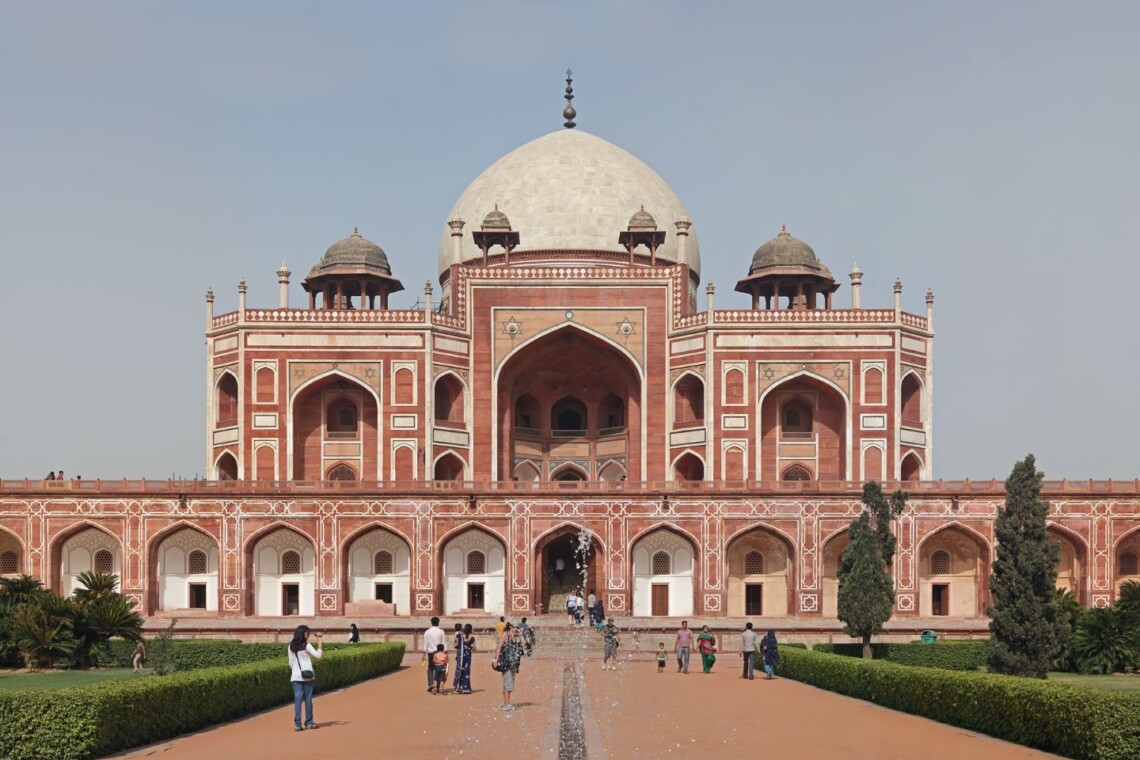How Day Use Rooms Are Changing the Way Indians Travel
- September 30, 2025
- Leisure
Travel habits in India have evolved dramatically in the past few years. With more professionals working remotely, couples seeking short getaways, and... Read More

Towering serenely amidst manicured gardens in Delhi, Humayun’s Tomb isn’t just a stunning monument, it’s a window into the vibrant history and architectural brilliance of the Mughal era. Built-in the mid-1500s for the second Mughal emperor, Humayun, it boasts the title of the first major garden tomb on the Indian subcontinent and rightfully earned its place as a UNESCO World Heritage Site in 1993. Let’s delve into what makes this mausoleum so special:
Imagine yourself transported back to the 16th century. Witness the construction of Humayun’s Tomb, not just as a resting place for an emperor, but as a trendsetter. This wasn’t your typical tomb. Built by Persian architect Mirak Mirza Ghiyas and his son, it broke away from traditional Timurid tombs and introduced a novel design. Picture a majestic double-domed structure, crafted from red sandstone and white marble, its elegant lines and geometric patterns reflecting Persian influences. But the real innovation lay in its setting. Imagine lush gardens surrounding the tomb, creating a harmonious blend of architecture and nature, a concept later perfected in the world-famous Taj Mahal.
Humayun’s Tomb wasn’t just aesthetically pleasing, it was deeply symbolic. The octagonal structure represented the eight directions and the heavens, reflecting the Mughal belief in the afterlife. The central dome, inspired by Timurid tombs, stood for the emperor’s journey to paradise. Every intricate detail, from the calligraphy inscriptions to the geometric designs, conveyed messages about power, faith, and the emperor’s legacy.
Humayun’s Tomb didn’t just mark the end of an emperor’s reign, it became a blueprint for future generations. This pioneering garden tomb served as inspiration for architectural marvels like the Taj Mahal, showcasing the evolution of Mughal art and shaping the architectural landscape of India. Beyond aesthetics, it served as a royal burial ground, housing the remains of several other Mughal emperors and their families, solidifying its place as a symbol of dynastic power and prestige.
Stepping into the complex of Humayun’s Tomb is like stepping back in time. The manicured Char Bagh (four-quartered garden) with its water channels and vibrant flowers transports you to an era of imperial grandeur. Explore the tomb itself, marveling at the intricate pietra dura inlay work, the delicate calligraphy, and the breathtaking views from the rooftop terrace. Don’t miss the adjacent buildings like the Bu Halima’s Tomb, showcasing the diverse architectural styles of the era.
Humayun’s Tomb, protected by UNESCO since 1993, has undergone extensive restoration work, ensuring its survival for generations to come. More than just a historical monument, it serves as a vibrant cultural center, hosting educational programs, music events, and exhibitions. This fusion of history and modernity keeps the legacy of Humayun alive, inspiring artists, architects, and visitors alike.
So, when you plan your trip to Delhi, don’t miss this architectural gem. Humayun’s Tomb is more than just a resting place; it’s a testament to Mughal ingenuity, a symbol of imperial power, and a breathtaking fusion of art, history, and nature. If you’re looking for a place to stay near Humayun’s tomb, Saltstayz offers two luxury hotels just 15-20 minutes away from Humayun’s tomb. Our hotels have luxury rooms, free WiFi, spotless washrooms, clean linen, and you get free breakfast with every booking. Saltstayz Thyme Sukhdev Vihar and Saltstayz Malcha can be a perfect option for you to stay.
Join The Discussion